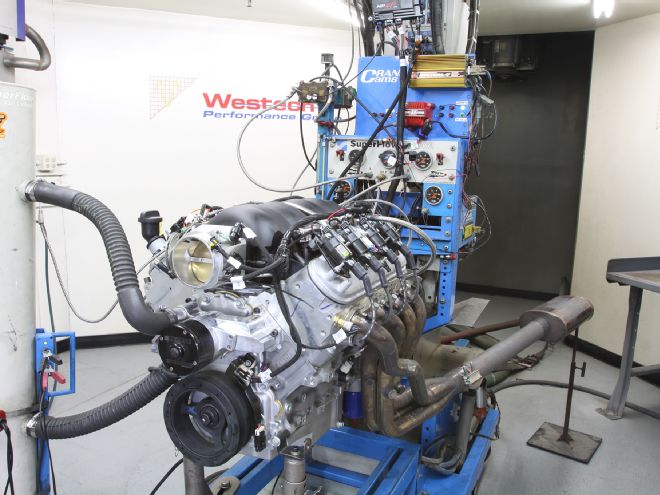
If you want a fresh powerplant, nothing beats the ease and value of a new crate engine. But, since many of us always crave “just a bit more power,” it’s nice to know it’s only a few speed parts away. In this case, we started with a 430-horsepower Chevrolet Performance LS3 crate engine. Of course, 430 should be in quotes because it’s conservative, very conservative. Part of this is because Chevrolet dynos to a different correction factor than the rest of the aftermarket world. So, right off the bat our dyno numbers are higher. Add in that they dyno through factory exhaust manifolds and the real-world power numbers are always higher than the advertised ones. But hey, under-promise and over-deliver always leads to happy customers.
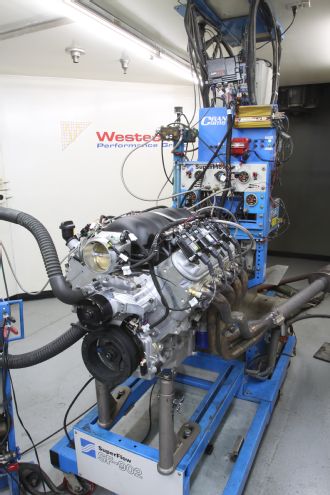
Still, as good as the power output is, it is easy to extract more performance out of the LS3. One key area is the camshaft. The one provided by Chevrolet is on the conservative side at 204/211-degrees duration at 0.050 and 0.551/0.522-inch lift. Those specs are great if you’re concerned about silky smooth idle and emission requirements, but if your Corvette isn’t worried about those things then a more aggressive camshaft can really wake up the already potent LS3. To find out just how much power is waiting to be unleashed we decided to baseline the crate LS3 and then toss in a moderately aggressive camshaft. After all, it’s a modification that’s relatively easy to do and it doesn’t require pulling the heads or cracking open the short-block. So, follow along as we attempt to squeeze a few more horses out of an LS3 crate engine.
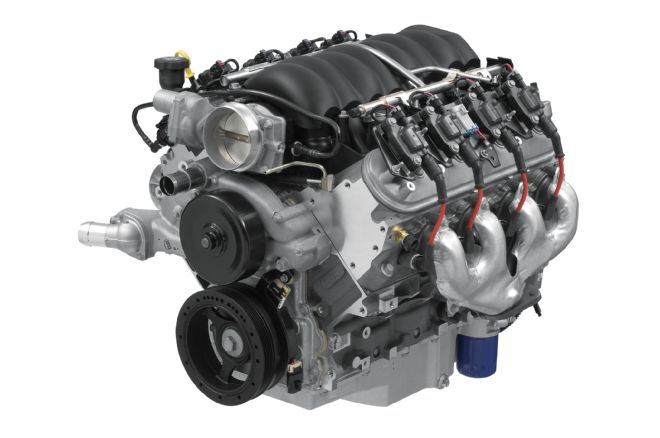
01. Our starting point was a new Chevrolet Performance 376-cubic-inch (6.2L for the metric crowd) LS3 crate engine (PN 19301326). At $6,200 it’s a lot of bang for your buck and the perfect upgrade engine for your earlier model Corvette.
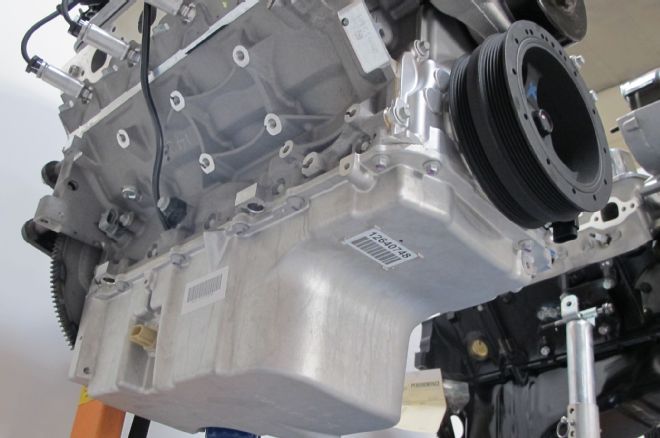
02. The biggest problem with getting this new crate engine into a Corvette is that it shipped with a Camaro oil pan. We were able to order replacement parts and sell off the stock parts, so swapping to a C5/C6 Corvette oil pan only cost a couple hundred bucks. If you’re transplanting into an older Corvette, then companies like Holley make oil pans to clear the various crossmembers.
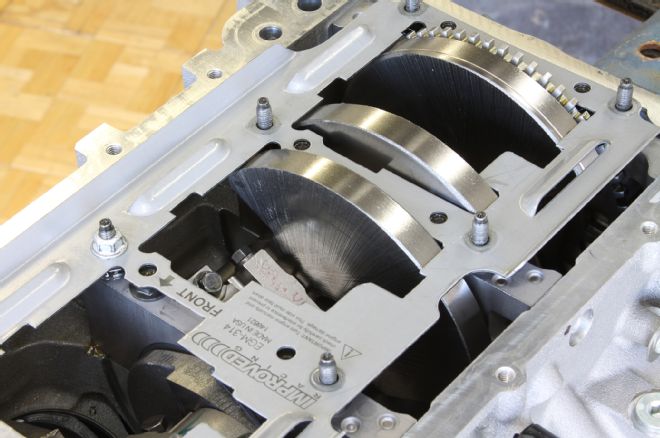
03. One of our favorite shops for niche products is Improved Racing. In this case they had a complete oil pan swap kit that included a C6 oil pan, gasket, hardware, racing oil pan baffle, crank scraper, dipstick tube, dipstick, pickup tube, and oil filter bypass. In other words, the kit (PN EGM-464, $665) comes with everything you need to swap from whatever pan you have to one suitable for your C5 or C6 Vette. The included crank scraper replaced the windage tray (in this application) and helps reduce oil starvation by draining more oil to the bottom of the sump. As the name implies, it “scrapes” oil off of the crank, reducing parasitic drag, and can net an extra 2-5 horsepower. This one works with a factory (3.622-inch stroke) crank, but they just came out with a stroker version.
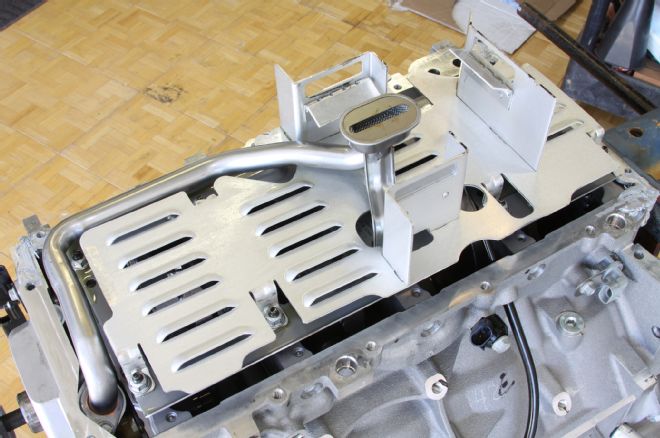
04. The key player in the kit was this badass bolt-in oil pan baffle. LS engines are prone to oil starvation at high g’s. The main culprit is the GM oil pan baffling, or more accurately the lack of baffles. Improved’s system adds track-tested directional trap doors and offers improved drainback and oil control over the stock baffle. According to Improved Racing, it’s sufficient to prevent oil pressure drops at up to 1.4 sustained lateral g’s. It simply bolted into the factory pan.
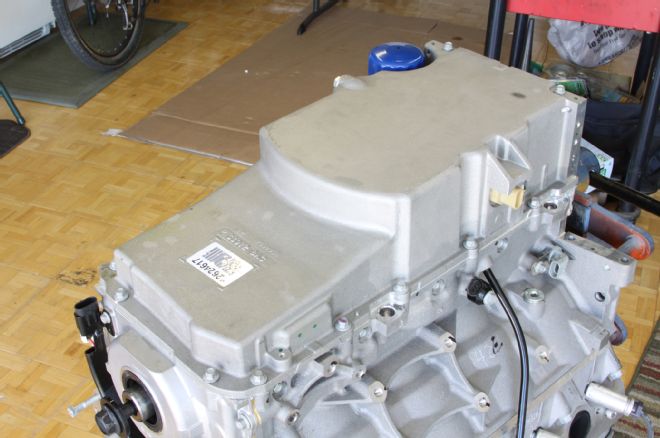
05. And here she is with the new C6 oil pan in place. With this done it was time to hit the SuperFlow 902 dyno over at Westech Performance.
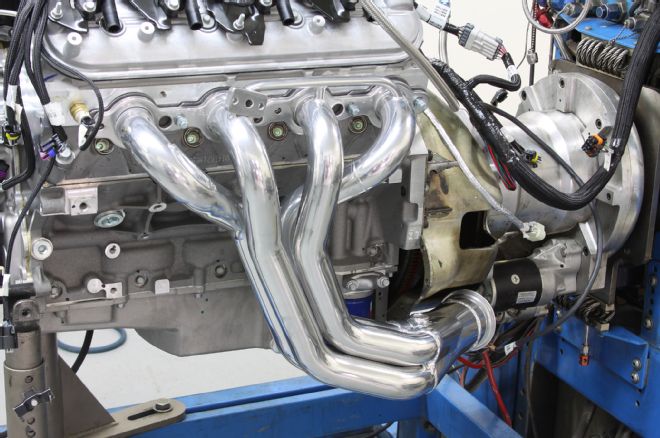
06. We wanted to dyno the LS3 with a set of C5 headers from JBA Performance, but as you can see they fit a Corvette, but not a dyno. Hey, that’s better than the other way around!
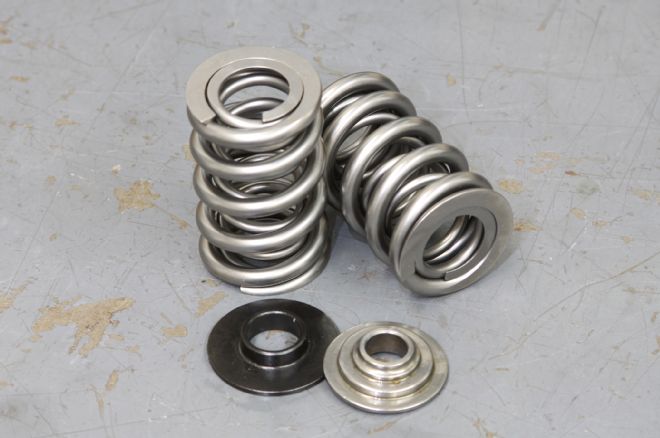
07. With a set of Westech’s headers in place (with mufflers), we started tuning for a baseline number. The test was run on Rocket 91-octane gas and we used a Holley HP computer, along with their cable-actuated billet throttle body.
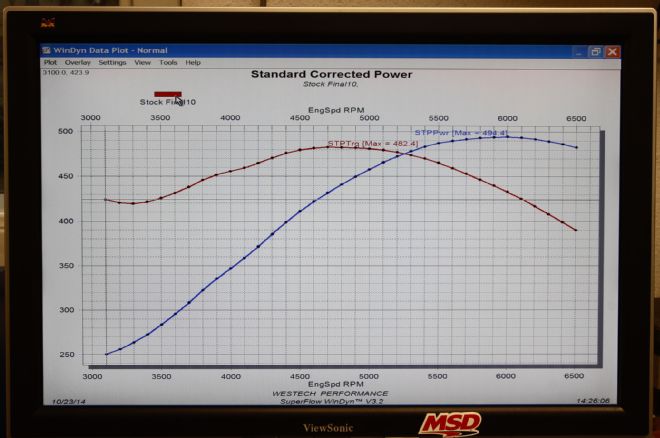
08. After nine tuning pulls we nailed down a best run of 494 horsepower and 482 lb-ft of torque. The numbers might sound high, but remember that we’re running long-tube headers, aftermarket EFI, and we picked up a few ponies from the oiling system improvements. Also, there’s the legendary GM “under rating,” which is mostly due to the different correction factor they use.

09. The plan was to add a bigger cam, but to keep everything happy that meant we needed to upgrade our springs as well. After a little math we came up with COMP’s dual valvespring kit (PN 26926TS-KIT). This valvespring kit came with tool steel retainers, 7-degree steel valve locks, valve seals (which we didn’t use), and spring seats. Max lift for these springs was listed at 0.675-inch.
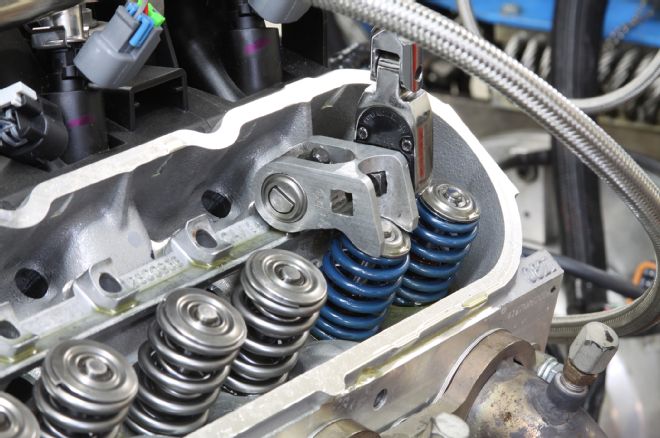
10. After pumping the cylinder full of air to keep the valves from dropping we started removing the stock blue springs and installing the COMP pieces.
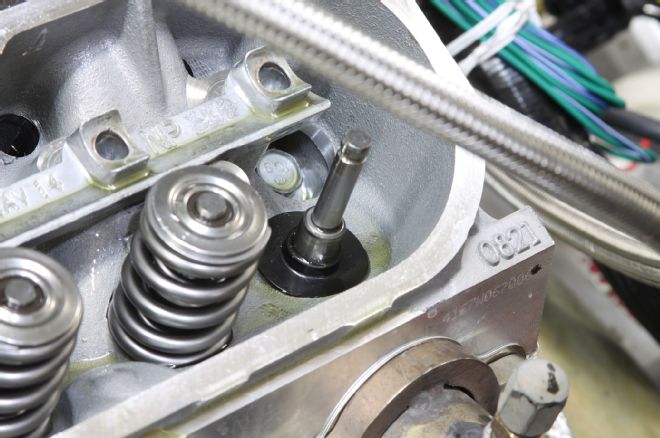
11. Trust us, the air method is the way to go and much faster than raising up each piston to hold the valve up. For extra peace of mind, we upgraded the stock LS3 rockers with COMP’s LS trunnion kit (PN 13702-KIT) and added Hi-Tech 7.4-inch hardened pushrods (PN 7955-16) to the mix. These two parts don’t add any power, but they do add reliability if you’re going to be running the engine hard.
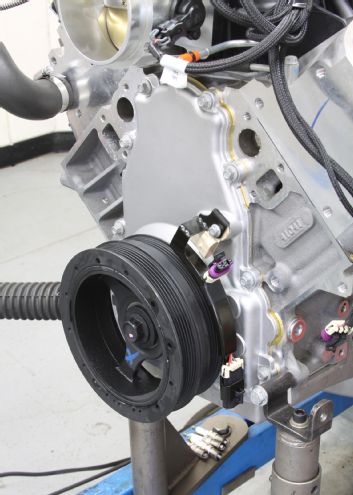
12. To swap cams, we had to remove the timing cover, and to do that we had to pull the damper. Remember that the crank bolt is torque-to-yield and shouldn’t be reused, so pick up a spare from GM (PN 12557840, $6) or buy a reusable one from ARP (PN 234-2405, $32).
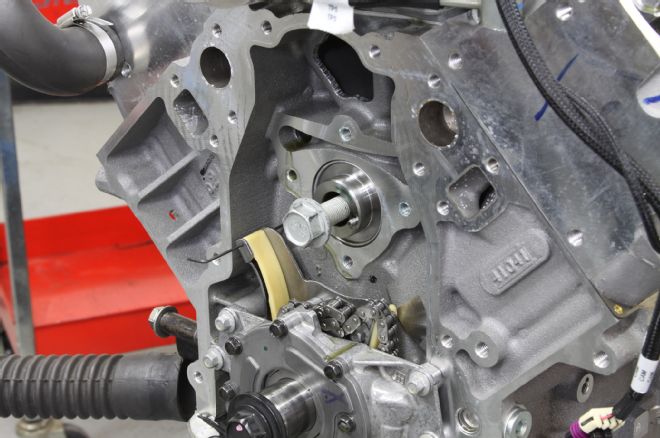
13. The stock single-bolt LS3 cam was then removed from the crate engine.
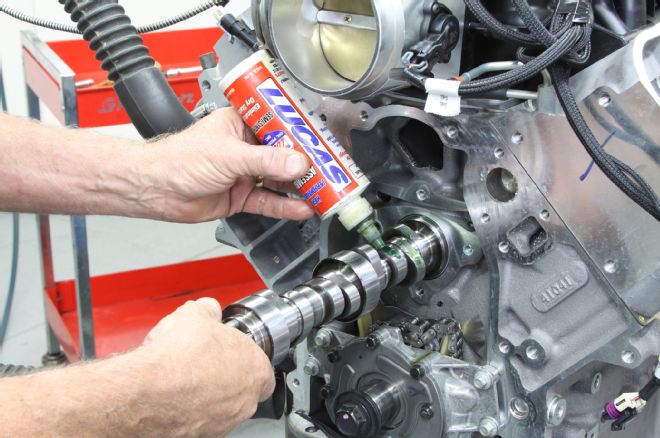
14. What stick you decide to stuff in an engine will ultimately determine its personality. Go super aggressive and you’ll make more power, but it won’t be happy cruising around town. We consulted with the cam gurus over at COMP and came up with a profile that should yield gobs of power and have nice enough manners for a Sunday cruise. The final specs on the cam were 227/243-degrees duration with lift numbers of 0.613/0.623-inch on a 113 LSA (PN 54-454-11). LS3 heads just love these big-split cams.
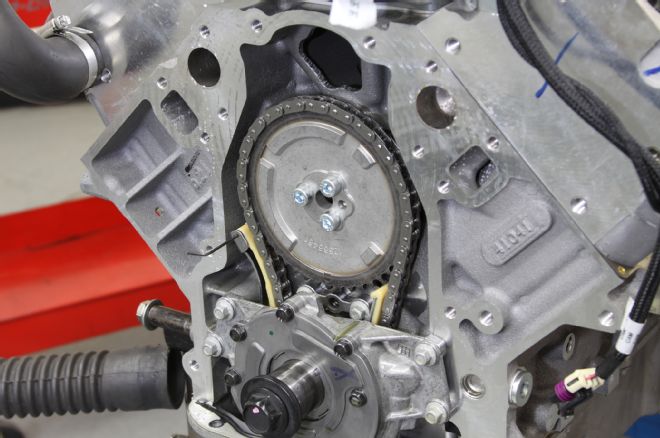
15. Our new cam was a three-bolt style, so we hit up Improved Racing for the proper four-pulse timing sprocket (PN 12586481, $20). With this installed we buttoned up the engine and started tuning for the extra power we were expecting.
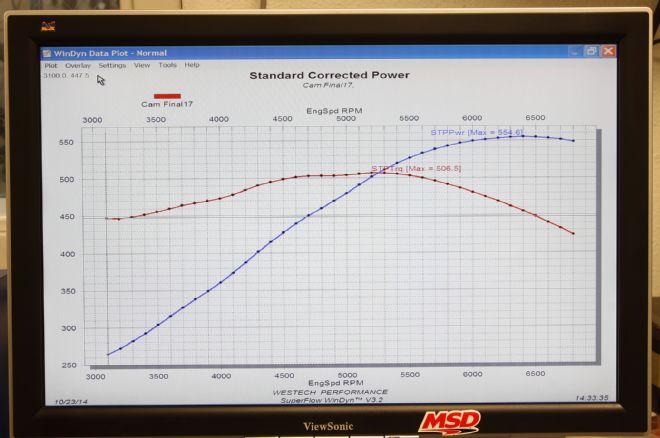
16. Seven pulls later we were rewarded with a best pull of 555 hp and 507 lb-ft of torque. The new cam made a ton more power, especially over 5,000 rpm.
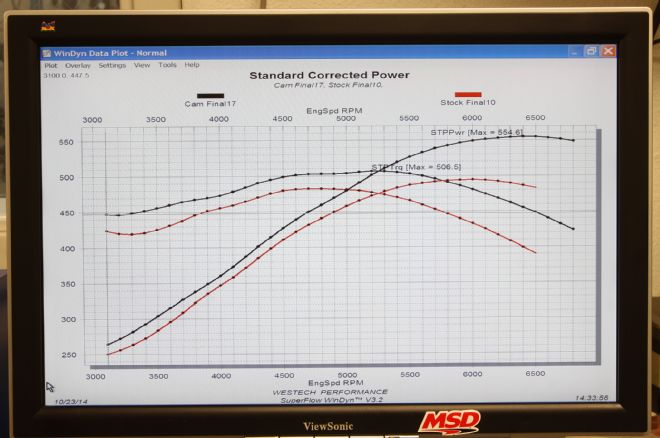
17. Actually it made more power and torque over the entire pull with peak gains of 61 hp and 25 lb-ft of twist. The cam, spring kit, pushrods, and sprocket set us back $1,050 and we feel the performance gain. Put this in the good bang-for-the-buck category.